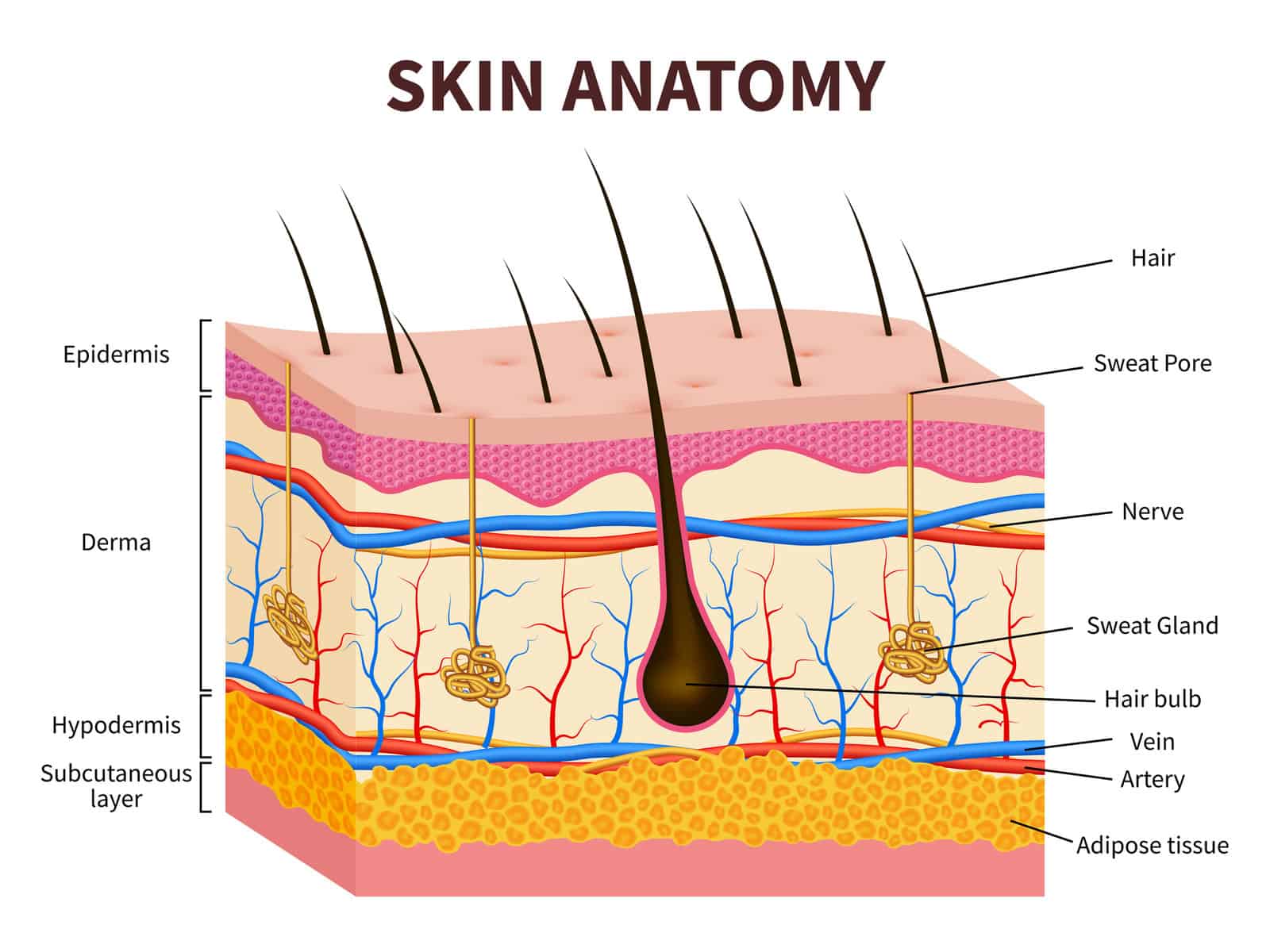Integumentary System

The integumentary system is composed of the skin, hair, nails, and exocrine glands. The skin is the largest organ in the body and serves as a barrier between the internal environment and the outside world.
The hair and nails are appendages of the skin that provide protection and insulation. The exocrine glands produce substances that keep the skin healthy and help to regulate body temperature.
The skin is composed of two layers: the epidermis and the dermis. The epidermis is the outermost layer of the skin and is made up of dead cells that provide a barrier against infection.
The dermis is the inner layer of the skin and is composed of living cells that provide strength and elasticity. The hair and nails are made up of keratin, a protein that is also found in the epidermis.
The exocrine glands are responsible for producing sweat, which helps to regulate body temperature, and sebum, which keeps the skin healthy.
Sweat is produced by the eccrine glands, which are located in the dermis. Sebum is produced by the sebaceous glands, which are located in the epidermis.
The integumentary system plays an important role in protecting the body from infection and injury. It also helps to regulate body temperature and keep the body hydrated. It also helps to regulate body temperature and keep the skin healthy.
Integumentary System Topics
Skin
Healthy and glowing skin starts here! The skin is the largest organ of the human body. It protects us from the environment, regulates our temperature, and allows us to feel sensations....
Nails
Nail it! Nails are one of the most important parts of our bodies. They protect our fingers and toes from injury, help us pick up small objects, and provide...
Hair
Love is in the hair! Hair is one of the defining characteristics of mammals. The human body, apart from areas of glabrous skin, is covered in follicles that produce thick...
Body Fat
Burn that fat! Body fat is the adipose tissue found in humans and other mammals. It is composed of fat cells (also known as adipocytes) which store energy in the...
Sweat
Don't sweat the small stuff! Sweat is mostly water, with small amounts of salt, urea, and other electrolytes. It also contains trace amounts of other substances, including amino...